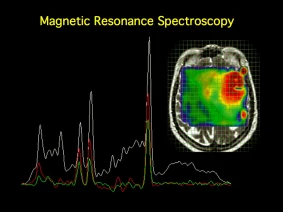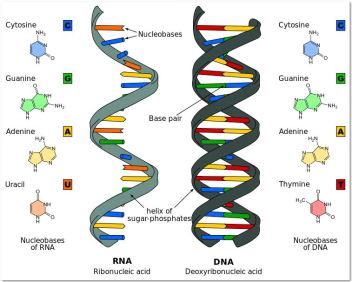This an excerpt from this article discussing an academic paper titled “The Infrared Frequencies of DNA Bases, as Science and Art“. The paper is written by Susan Alexjander, an internationally known musical artist, who, in collaboration with Dr. David W. Deamer, professor of Chemistry and Biochemistry at the University of California, Santa Cruz, actually recorded the music of DNA!

The following might be a tricky read, but pay attention – it’s awesome stuff!
“In 1988 the author and biologist Dr. David Deamer collaborated on a science/art project which consisted of measuring the vibrational frequencies of the four DNA base molecules, translating them into ‘sound,’ programming them into a Yamaha synthesizer and using this tuning system as the basis for original compositions entitled Sequencia (1990 and ’94 CD).
The realization of biological, infrared frequencies into sound has resulted in unusual insights into the harmonic fabric of DNA, and reactions from listeners suggest that our bodies may have a way of recognizing their own electromagnetic patterns through the resonance of tone.
The bases of DNA and RNA have certain resonance frequencies related to the absorption of infrared light. This is a common property of all organic molecules, and in fact infrared spectra are used as a primary diagnostic characteristic in analytical procedures.
As the light is passed through the sample, it is absorbed by the sample at specific frequencies and the instrument plots the absorption bands as a spectrum.
For reference, below (left) is what the electromagnetic spectrum looks like,and on the right you see an example of what the data from magnetic resonance spectroscopy looks like. This technique is also used in MRI scans (i.e. “Magnetic Resonance Imaging”).


(…) The problem of getting the frequencies within hearing range can be solved by recognizing that any hertz number divided in half or doubled will produce its corresponding lower or upper octave, respectively, whether it be sound or light. Thus, 8.7 x 1013 Hz can be divided in half, again and again, to create lower and lower octaves. Finally we derive, after dividing 36 times, a workable frequency which, if it were sound, would fall within the range of hearing. Thus we would have for the example above 1266, which is a very comfortable frequency for the ear, corresponding to a (slightly sharp) D#.
To clarify, what is being discussed here is simply taking the sound frequency and scaling it along octaves, much like moving up or down a piano. See this chart for reference of frequency scale on a piano.

The frequencies recorded are far outside the threshold of the human ear which is between 20 and 20,000 Hertz, and hence why the recordings had to be scaled to lower octaves. The sound of DNA is way off the scale on the right, beyond even the hearing of dolphins.

(…) Four base molecules were measured: adenine, cytosine, guanine and thymine.

Each base molecule after being subjected to light yielded about 15 or 18 frequencies; 60 in all. Once this data was collected, it was iterized down into a hearing range and programmed into a Yamaha DX7 IID synthesizer which would create sound banks from any hertz numbers provided as input. A special electronic keyboard was needed because the tunings that were derived were almost all microtones, or tones smaller than a normal half-step (for instance any c to c#) on a piano.
For further information on how DNA is turned into music, or cymatics in general, this is a great place to start.
As explained here, Susan Alexjander and Dr. Deamer found that there were four fundamental frequencies that appear in DNA: F#, C#, A and D#.
Alexjander goes on to say:
“Are The Frequencies in DNA Bases Harmonically Ordered? They most certainly are. By comparing all 60 pitches one can find all of the precise ratios found in the first 16 harmonics of the overtone series: octaves, P5th, P4ths, Major and minor thirds, Major and minor 2nds and 7ths; even a ‘flat’ seventh. Mathematically, the odds of this happening at random are almost non-existent.
MATH makes processes visible. It decodes meanings. We can see the self-organizing power of the universe, and because the universe is a community it is constantly communicating. Are the sounds of DNA communicating anything to us?

Sequencia (Alexjander’s DNA-music album) first begins to communicate through its concept, that we can hear the hidden beauty of life. This helps to give us a perspective – to find our place in the “Great Tone.” …
… These particular DNA ratios, originating in light, are profoundly arresting to the ear. This first wakes up the nervous system, puts it on alert. What follows in sound is then allowed to enter our psyches on a deep level. People report feelings of connectedness, familiarity. “I feel right at home,” they say. It is tempting to speculate that the body is recognizing itself, and is communicating this to the psyche.”
Read more about the secrets of Cymatics, DNA and Egyptians